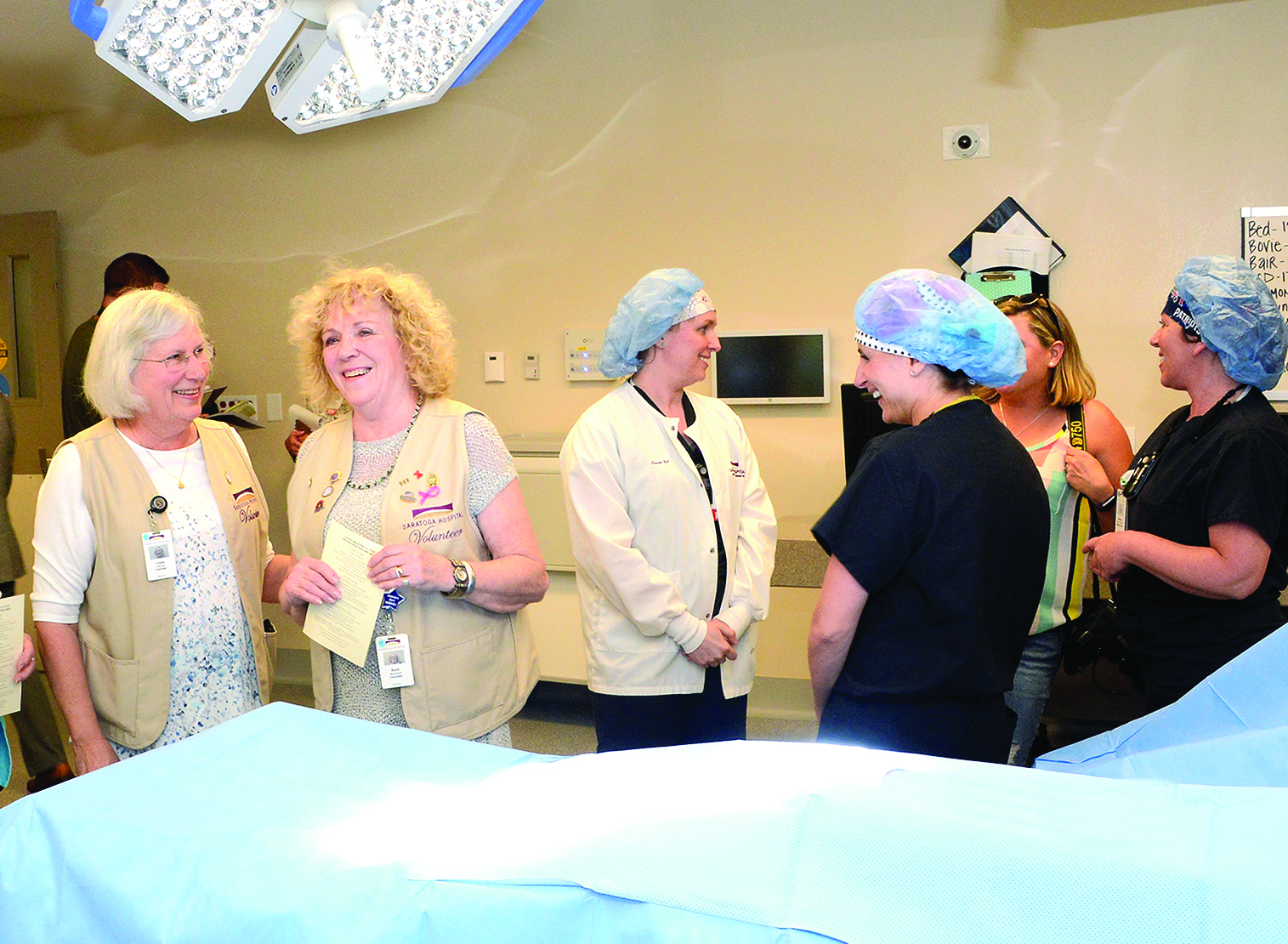
Courtesy Saratoga Hospital
Saratoga Hospital celebrated in May the closing of its capital campaign for surgical and intensive care services.
The campaign began with a $4 million goal that was doubled to $8 million, due to the community’s motivated response to help secure support for burgeoning surgical and critical care volumes, hospital officials said.
The campaign supported the largest capital project in the hospital’s history—its new Surgical Pavilion and the Marylou Whitney and Desmond DelGiacco, MD, Intensive Care Unit. In total, the five-year campaign raised $8 million toward the total costs that exceeded $32 million.
“None of this would have been possible without the generosity of the Saratoga community,” said Frank Messa, chairman of the Saratoga Hospital Foundation board of trustees. “Every donation made an invaluable impact. More than 38 percent of the total number of gifts were less than $100. Whatever the capacity to give, it could never exceed the spirit of each and every kind heart who gave.”
A total of 2,206 donors supported the campaign, including 663 hospital employees, (an unprecedented 30 percent of all donors to this campaign), resulting in the largest number of employee donations in the history of the hospital officials said.
“Since 2000, Saratoga Hospital has had a 75 percent increase in surgeries,” said Angelo G. Calbone, president and CEO. “We’ve increased our number of surgeons on staff by 63 percent to meet the demand. Emergencies were bringing in four to six unscheduled surgeries a day. The prior operating suites were not designed for today’s robotic and other advanced technologies.”
With the new facilities up and running, officials said the hospital is seeing shorter hospital stays and overall better patient outcomes with the advanced surgical techniques and state-of-the-art intensive care the campaign helped provide.
Specifically, the new Surgical Pavilion includes:
• Ten state-of-the-art operating suites, built specifically to increase space around the sterile field, integrate advanced robotic, video and boom technologies, and accommodate today’s larger surgical teams.
• Upgraded air handling systems to improve infection prevention, temperature, and humidity control.
• New, larger, separate and more private preoperative and postoperative care space to meet the needs of increasingly complex surgical patients.
• Private rooms limit patient-to-patient contact and optimize heating and lighting control to meet individual needs.
• Each space has seating, sleeping, device charging, and lavatory accommodations for family members, allowing them to remain close to their loved one as long as necessary.
• Large windows and oversized clocks in every room will help acclimate patients to night and day.
• Each room has Dialysis capability, eliminating the need to move critically ill patients.
• Booms afford maximum flexibility when positioning a patient’s bed, allow staff to easily move around the patient without impediments, and eliminate the noise created by wheeling equipment from room to room.
• Specially designed room dividers and doors with “electric glass” turn opaque with the flip of a switch, eliminating the need for curtains, reducing noise and enhancing infection control.
• Advanced early-warning patient monitoring system.
• Separate, customer-focused waiting area and consultation room where families can gather, meet with physicians, and discuss care options and other difficult decisions.
• Hospitality Center for families and other visitors that provides easy access to refreshments.
